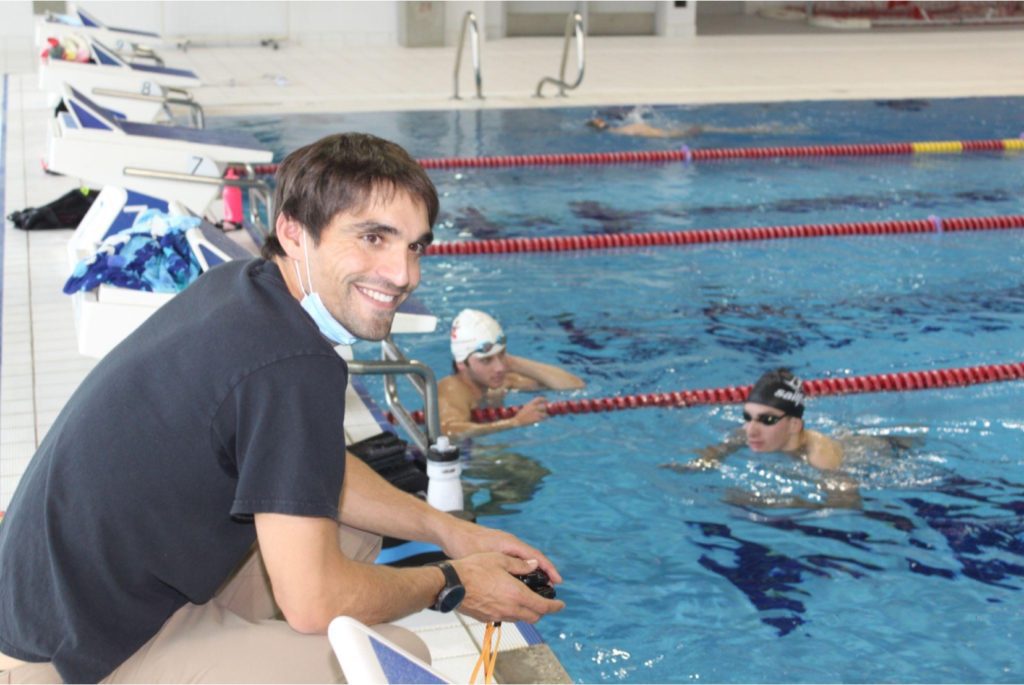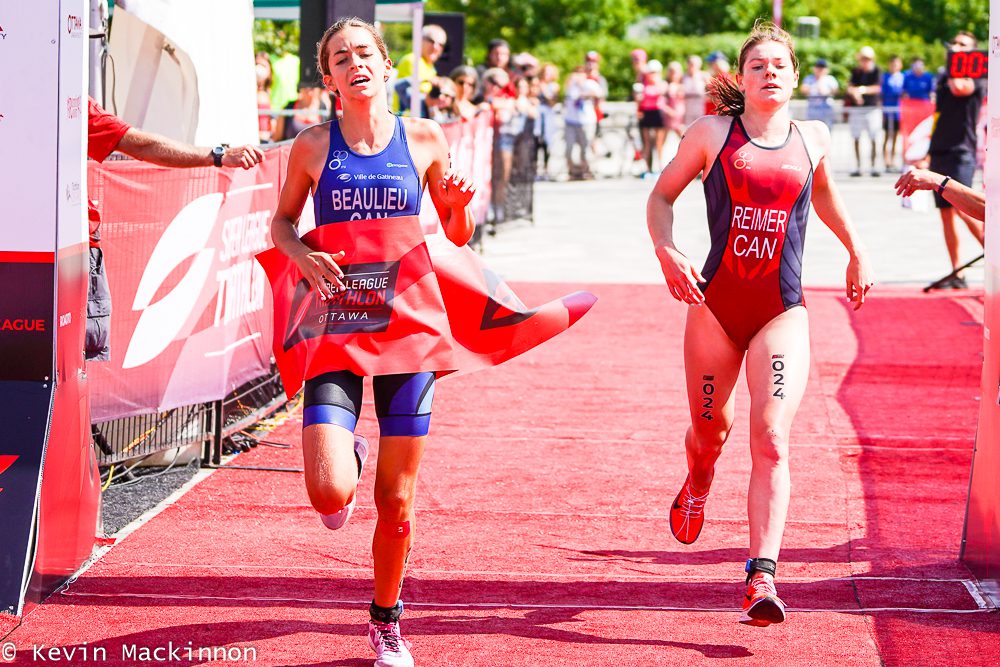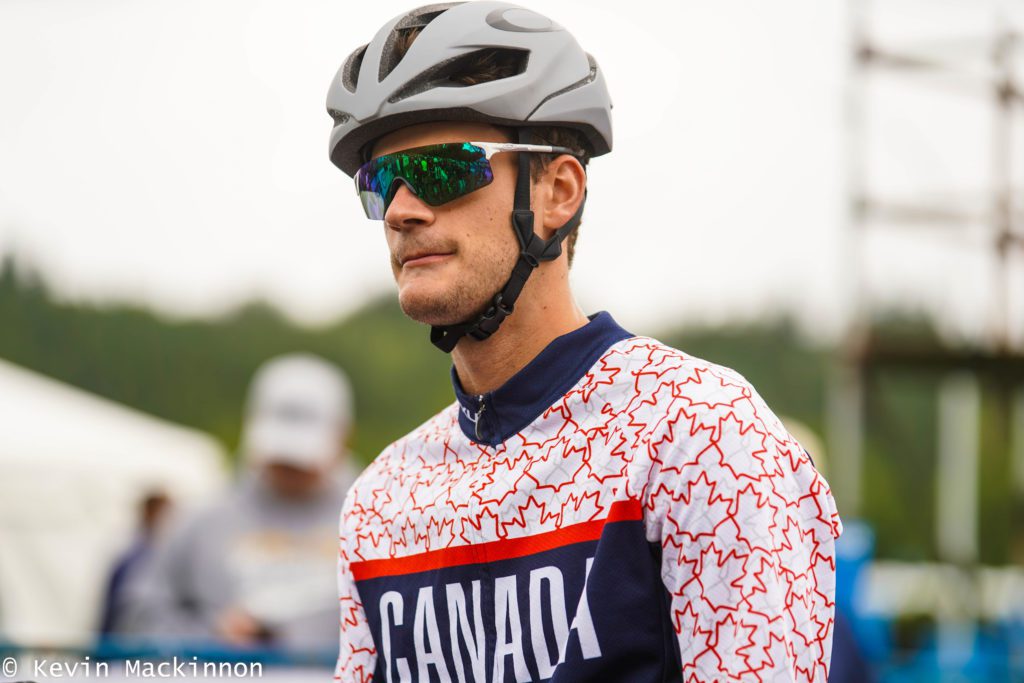Is Quebec’s Rouge et Or the country’s top triathlon club?
A look at the club based in Quebec City that is developing some of the country's top triathletes
 Photo by:
World Triathlon
Photo by:
World Triathlon
Mention the Rouge et Or, and most sports fans will think football. With 10 Vanier Cup titles under the Laval University team’s belt since it kicked off in 1996, it’s the most successful college football team in Canada.
Le Rouge et Or – or Red and Gold – is the signature name of all sports teams that train at PEPS, the physical education and sports pavilion on the university’s sprawling campus in Quebec City. That includes the Rouge et Or triathlon club that is quietly pumping out some of the most promising triathletes in Canada.
Think Alexis Lepage, who made his Olympics debut at Tokyo 2020 in the inaugural mixed-team relay. Think Charles Paquet, who in 2016 finished second at the junior world championships in Cozumel. Now 24 and a ULaval business administration student, Paquet emerged as one of Canada’s most promising triathletes on the international circuit last year, placing sixth in Karlovy Vary in the Czech Republic and seventh a week later in Hamburg, Germany, followed in late October by a silver medal performance at the Americas Cup in St. George, Utah. This year Paquet finished fourth at the Americas Triathlon Cup Sarasota-Bradenton and 17th at the World Triathlon Cup Arzachena.
Related: Junior phenom – Charles Paquet
“It feels so good to have had such good races after the pandemic and training by myself one whole winter,” said Paquet, poolside at PEPS just a few days before his departure for Utah last October. As a high-performance athlete, Paquet had been allowed access to the pool through the worst days of Covid, but staying focused on his goals had been tough.”There were no races and I had no idea where I was going. I just tried to train, hoping one day it would pay off.”

By the time Covid restrictions were relaxed last fall, it was hard to imagine Paquet swimming lap after lap alone in his lane, no coach on deck and no one in the lane next to him. That particular Saturday, there were 18 junior and elite athletes in the water, while a group of development athletes, masked, warmed up on the sidelines waiting for their training session to start. Rouge et Or’s head coach Pierre-Yves Gigou, along with assistant coach Nicolas Proulx-Bé, paced the deck. In the far left lanes, junior triathletes Léo Roy and Mathis Beaulieu matched each other stroke for stroke. Roy and Beaulieu are among the top junior triathletes in Canada, and that weekend they were packing in preparation for the junior world championships in Quarteira, Portugal, where they’d go head to head. Until Roy aged out of the junior category this year, he and Beaulieu were rivals in every race, but also close friends.There is an ambience here that is really, really great,”said Roy, who moved to Quebec City in September to train with Gigou’s Rouge et Or after a couple of years working with Amélie Kretz at her home base in Montreal. “Everybody is helping each other. We are all getting better together, as a team. I really enjoy it.”

Roy’s sentiments are echoed by Noèmie Beaulieu (no relation to Mathis), another junior triathlete who had her coming-out party on the international scene last year with a seventh-place finish at the European Junior Cup in Banyoles, Spain. She topped that at the end of the season with a gold-medal performance at the Americas Triathlon Championships in St. George. The 18-year-old from Gatineau moved to Quebec City in 2020 to attend Collège Garneau, a junior college with a sports-études program that allows high-level athletes to tailor their course schedule to align with their training.
“I really needed to find a group to train with at my level, and I knew that was here, in Quebec City,”she said. “Everybody is really motivated. It’s cool.”
It helps that ULaval’s PEPS sports centre offers the best facilities in eastern Canada, all under one roof, with an airy, separate gym where high-performance athletes do their weight training and access to top-level kinesiologists, nutritionists and athletic therapists. Not far away is a new 500-m indoor running track – basically the outer ring of Quebec City’s new speed skating oval – and in the summer cycling season, rolling hills and good pavement are just a short bike ride away from campus.
“It would be great to make this a national training centre, like they have in Victoria, to have a centre at both ends of the country,” Roy muses. “I think that would be really great because we have such a good field of athletes to build on here.”
It’s a case Gigou has heard others make, and it’s tempting to dream about getting the kind of government financing it would take to turn the Rouge et Or club into a sort of Victoria-East, but Gigou fears turning that dream into reality would come at a high cost, both to high-performance athletes and to the recreational athletes who are a core part of the club.
“The moment you accept money from an agency like Own the Podium, everything is all about your top athletes’s performance, and in triathlon, that means the last three or four years of an athlete’s career,”Gigou said.”I believe you have to work on an athlete’s development over 10 or 12 years, in the lead-up to their best years. You can’t put them under pressure to perform right away.”
Gigou, originally from France, hit his stride as a long-distance triathlete at a young age: he was a four-time Kona finisher by his mid-20s. He left a coaching job in Sherbrooke to become Rouge et Or’s head coach in 2016, when he was just 29.

“When I arrived here, there were already some very talented athletes, like Alexis Lepage, who had just returned from two years at the national training centre in Australia, and Charles Paquet had just become the first Canadian male to make it onto the podium at a world junior championship. So, as a coach, it was a dream job. But my mandate was not just to coach elite athletes, it was to build the club at every level, for everyone from recreational age-group athletes on up.”
In 2017, Gigou and his staff launched the Rouge et Or mini-triathletes program, carting a fleet of pint-sized bicycles to elementary schools and summer day camps in the region, with athletes like Lepage and 2016 Rio Olympian Sarah-Anne Brault sharing their experiences with grade-school children and leading them on a training session. For those who get hooked, there is “triathlon school” throughout the year, for children aged eight to 13, and five weeks of triathlon day camp in the summer. By the age of 13 or 14, the most enthusiastic and promising triathletes are funnelled into the sports-études program offered by three different high schools in the region associated with Rouge et Or. Then there is Collège Garneau’s sports-études program for older students, the university team, the elite and junior teams – not to mention the recreational triathletes.“Les TriPeux” – a play on words describing those who train for fun, but “tres peu,” or very little – are the ones out for a bit of exercise, while there is a separate program for more competitive age groupers who are vying for spots at Kona or World Triathlon world championships.
Related: From Olympic hopeful to heart transplant survivor
The club has 10 employees, including three full-time coaches. Since there is no official university triathlon circuit, as there is for swimming, football or other sports, no actual funding comes directly from the university. The vast majority of the budget comes from the membership fees of the 260 athletes who make up the Rouge et Or any given year.
“We have to be self-financing,” says Gigou. “Our members pay to use the university sports centre. We pay, yes, but I have to say we have excellent access to one of the most beautiful sports facilities in Canada.”
For university students like Paquet and Lepage, having a base right on campus means it is easy to reconcile their training schedule with their university course schedule. And Gigou, who has a master’s degree in exercise physiology from the University of Sherbrooke, pushes his athletes to perform well academically, no matter what their goals.
“For me, it’s a point of pride to know that when my athletes’ triathlon careers are over, they will have a diploma in their pocket and some kind of other career option waiting for them,” he says. “I believe work-life balance is key.”
It’s an approach that is clearly working, based on the easy camaraderie among club members at every level.
“It’s fun. It’s not too serious. I like having contact with age-groupers – it just feels more real,” says Paquet at the end of a quick 3,400-metre swim workout.”We train like high-performance people, but it doesn’t feel like it.”
“What I love is the spirit of the group,” says Édouard Tétrault, a 20-year-old age-grouper who moved from Drummondville to go to school in Quebec City in order to train with the Rouge et Or. “We all push each other. We’re all trying to perform, but we’re doing it together.”
Loreen Pindera writes a “The Age Group Mind” column for Triathlon Magazine Canada. This story appeared in the May, 2022 issue of the magazine.
